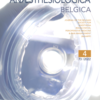Effect of combined use of cerebral oximetry and electroencephalogram monitoring on the incidence of perioperative neurocognitive disorders in adult cardiac and non-cardiac surgery: A systematic review of randomized and non-randomized trials
Postoperative delirium, Postoperative cognitive decline, Neurocognitive disorders, Spectroscopy, Near-Infrared, Electroencephalography
Published online: Feb 21 2023
Abstract
Background: There is insufficient evidence to recommend using either intraoperative cerebral oximetry or (processed) electroencephalogram (EEG) alone for preventing perioperative neurocognitive disorders (PNDs).
Objective: To evaluate the effectiveness of combined use of cerebral oximetry and electroencephalogram-guided anesthesia on the incidence of PNDs in adult patients undergoing cardiac and non-cardiac interventions.
Methods: A PICOS - based systematic review of English articles using Pubmed and Embase (from inception to August 2022) was performed. There were no exclusion criteria regarding the type of the study. Abstract proceedings and new study protocols or ongoing studies were not included. Review articles were analyzed in search of eligible references. All possible terms that were illustrative of PNDs were used.
Results: Among the 63 full manuscripts that were analyzed in detail, 15 met the inclusion criteria. We found 2 retrospective, 8 prospective observational and 5 randomized controlled trials of which 1 did not evaluate the use of neuromonitoring in the randomization process. The definition and the methods used to diagnose PNDs were very heterogeneous. Only 8 studies used an algorithm to avoid/treat cerebral oxygen desaturation and/or to treat EEG abnormalities. Overall, there was a tendency towards less PNDs in studies where such an algorithm was used.
Conclusions: Our results suggest that integrating information obtained from cerebral oximetry and an EEG monitor may reduce the incidence of PNDs whenever an adapted algorithm is used to improve brain function.
